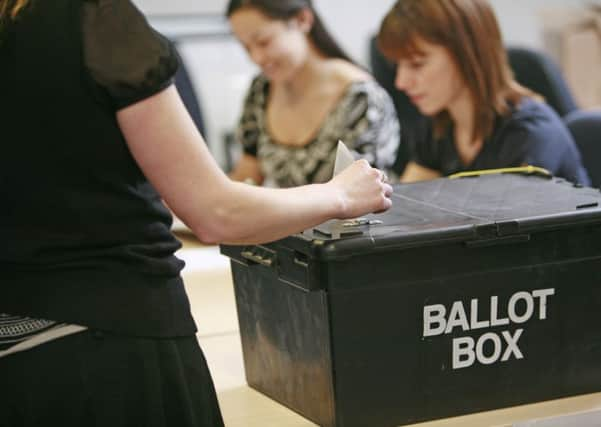Public to have say on boundary changes


To help make decisions, they can view interactive maps of current division boundaries at www.consultation.lgbce.org.uk.
The commission is asking people and organisations for their help to produce a new pattern of electoral divisions for 84 county councillors.
Advertisement
Hide AdAdvertisement
Hide AdMax Caller, chair of the commission, said: “We are asking local people and organisations to help us draw up a new pattern of electoral divisions for the whole county.
“We want to hear local views on where people think the focal point of their community is and where the natural boundaries between communities might lie.
“As we draw new boundaries, we will try to ensure that each county councillor represents roughly the same number of voters. We also aim to produce a pattern of divisions that reflects the interests and identities of communities.
“The commission will carefully consider all evidence presented to it during this phase of the review whoever it is from and whether it applies to the whole county or just a small part of it.”
Advertisement
Hide AdAdvertisement
Hide AdThe Commission is gathering local views before it draws up draft recommendations for a new pattern of divisions which are due to be published in November.
Local residents and organisations will then get another chance to have their say in this further round of consultations until the end of August.
Further information about the review and interactive maps of existing divisions can be found at www.consultation.lgbce.org.uk or www.lgbce.org.uk.
nThe Local Government Boundary Commission for England is responsible for reviewing local authority electoral arrangements, defining boundaries for local elections and the number of councillors to be elected, as well as conducting reviews of local government external boundaries and structures.
Advertisement
Hide AdAdvertisement
Hide AdThe aim of an electoral review is to provide for ‘electoral equality’; that means each councillor representing approximately the same number of electors. The Commission must also have regard to community identity and interests and providing effective and convenient local government.
The aim of an electoral review is to provide for ‘electoral equality’; that means each councillor representing approximately the same number of electors. The Commission must also have regard to community identity and interests and providing effective and convenient local government. It will publish its draft recommendations in November and open a further phase of consultation with local people. New divisions are scheduled to come into effect at the 2017 local elections.
nThe Commission’s decision on council size means it is ‘minded’ to recommend 84 county councillors for Lancashire but is not legally bound by that number in its final recommendations, and depending on the evidence submitted to it during consultation.
Members of the public can have their say on the new division arrangements by writing to: The Review Officer (Lancashire) Local Government Boundary Commission for England, 14th floor Millbank Tower,London SW1P 4QP.